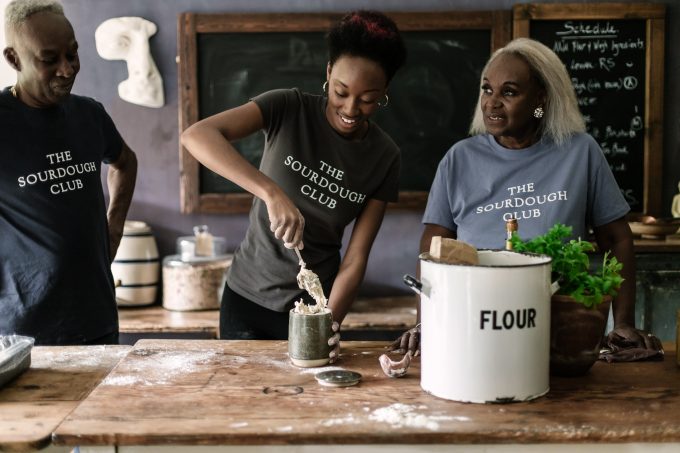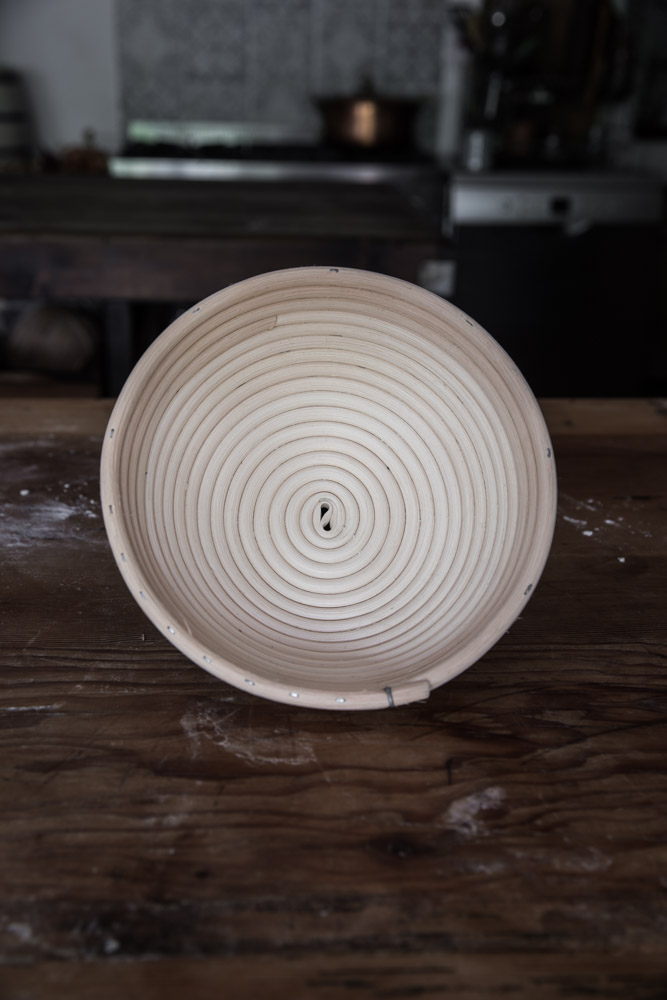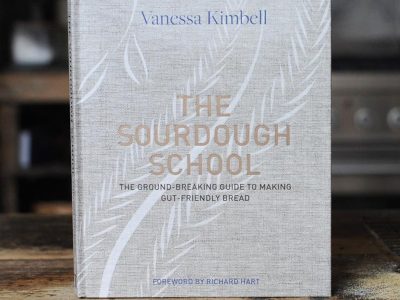
How to make a sourdough starter.
One of the things I am asked about most often is how to make a sourdough starter. There are various way of getting a starter, and you can get your own one going easily for very little outlay. All you need is a good-quality organic flour. You will capture the wild yeasts and bacteria already present in both the flour and your home. That said, if you are enthusiastic about getting going with your baking, then I usually suggest that you first concentrate on learning how to make great sourdough bread with a reliable, healthy starter that is already making beautiful, successful sourdough loaves, at least to begin with. If you don’t have a friend who has a lively starter, then you can purchase an established sourdough starter that already contains reliable yeasts.
How To Make Your Own Starter
To create your own sourdough starter you just need two basic ingredients — organic wholemeal flour and water, and some basic equipment and conditions.
The conditions necessary to make a sourdough starter
- A warm room. Not hot, not cold, just a room that is pleasant to be in.
- A non-reactive container (starters are acidic and will react with certain metals) to make and store the starter in. (I prefer glass but plastic is fine too).
- A whisk to incorporate air – you can use a danish dough whisk if you want.
- A breathable cover or a lid such as a clean tea towel or coffee filter, or a loose fitting disposable shower cap.
- A space to catch your wild yeast with no other cultured foods nearby, or there will be a cross over and you might not get the yeast you need.
A simple way to start is to put a 1/2 cup of organic stonegound wholemeal flour and just over a 1/2 cup of warm ( 28 C ) water in a large jar. If it feels too thick, add a little more water. It should be like a thick milkshake.
Whisk the mixture vigorously to incorporate air and cover with your breathable lid. Allow your mixture to sit in a warm place for 12 to 24 hours. Between the 12 or 24 hour mark you might be lucky enough to see some bubbles, indicating that organisms are present, but if you don’t then don’t worry. Repeat the feeding twice a day by removing a cup full (approximately half) of the mixture, and replacing with a 1/2 cup of flour and a 1/2 cup of water at 28°C (i.e. replace the amount you took out).
Stir vigorously, cover, and wait another 12 to 24 hours.
From now on you will need to remove half of the starter before every feeding and discard it so that the starter you do have can multiply in organisms without your jar overflowing.
How long it takes to get your starter going depends on many factors but it can take anything from 2-10 days. The sourdough starter should be beautifully bubbly and have enough yeasts and bacteria to be active enough to bake with. It should double in 3 -4 hours.
Once you have your microbes captured then you can change flour, and we teach you about each different starter and how to make the kind of bread you want to make with a white starter, a wholemeal starter, or a rye starter, chocolate starter, spelt starter or pretty much any flour you want to use in the Sourdough Club online course.
Once you have established your starter, you can then move to a maintenance schedule. Maintenance is when you refresh, proof and then hold in the fridge between bakes. DO remember to refresh your starter before you bake.
On rare occasions, you may have a good go at making your own starter only to find that it smells or tastes horrid or that the bread or other baked goods it produces are not very pleasant. This means that the bacteria that has occupied your starter is not the right kind, and the lactic acid, which makes the starter inhospitable to other organisms, hasn’t got going. You will need to discard this one and start over, moving your culture to a different room.
I most often find that people who are having difficulties have meddled with the process trying to fast track it or not refreshed frequently enough. Please be patient. You do not need hot water, live yeast, grapes or any other extra thing to get yeast going. It is naturally present in the grain that you use and, for the best results, use stoneground organic wholemeal flour.
For people who are completely new to sourdough, I suggest using an established culture as it is easier to get started with. When people first get going and they are keen to bake bread straight away, it is faster and simpler to use an established one that already contains active yeasts that have been populating the dough over a long period of time. An established dough is stable, active, and resilient. It is because of its established bacteria and yeast that in the first attempts of making sourdough bread you will be guaranteed a more pleasantly flavoured sourdough and more likely to continue baking.




 Bread, Inflammation and the gut microbiome
Bread, Inflammation and the gut microbiome